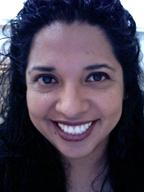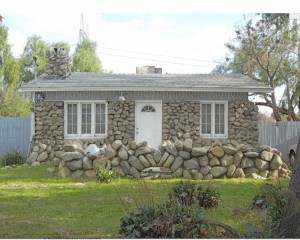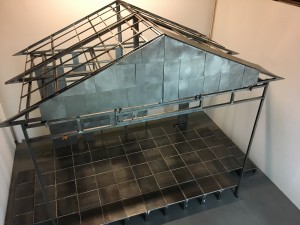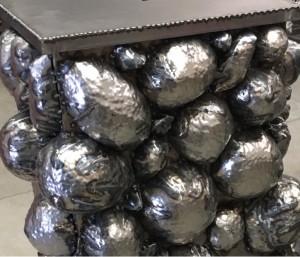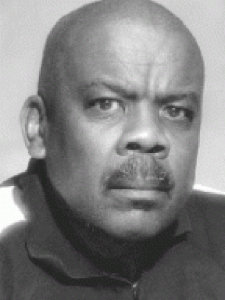
Lora Rosman’s passion and ambition motivated her to pursue a major in psychology with a minor in American Indian Studies, to become a marriage and family counselor who travels to assist indigenous communities across the country.
Art major Eduardo Chavez fell in love with art in high school and hopes to become an animator, to create images where everyone can be reminded that they matter.
Initially unsure of her career path, sociology major Mayra Rodriguez discovered a love of advocacy for others, after working in the mental health field as a certified legal Spanish/English interpreter.
Although they have different dreams and goals, these California State University, Northridge students do have some common ground: They work at the Delmar T. Oviatt Library, and they are recipients of 2017 library-funded scholarships.
Rosman, Chavez, Rodriguez and 19 other students were honored at the Oviatt Library’s Student Employee Scholarship Reception, held March 30 at the Orange Grove Bistro on campus. This was just the second annual reception, but the library has offered at least 20 $1,000 scholarships each year for the past five years.
Before the presentation, scholarship donors and recipients got to know a little more about one another. During the program, Mark Stover, dean of the Oviatt Library, presented students with scholarship certificates, and they thanked the donors.
“This is my favorite event of the year,” said Stover. “It’s really special for me personally because I was a library student assistant when I was in college, and it inspires me when I hear about our student assistants’ lives and see the scholastic and academic challenges that they’ve overcome. I’m so pleased to be in a room with 22 of the most wonderful students that you can imagine, their family and friends, and all the wonderful donors who gave to these scholarships.”
For communications major Diana Takehara, who works in the library’s Music and Media Department, receiving the Virginia Elwood Scholarship meant getting a little closer to achieving her dream of working with community youth. “I personally take 18 course units along with my job, and having this scholarship really does help,” Takehara said. “Just being able to apply for scholarships gives us a sense of hope.”
Virginia Elwood-Akers, the donor behind Takehara’s scholarship, couldn’t agree more.
“I was a librarian here for 30 years — I retired in 2001, and I loved my job,” she said. “I went to college on scholarships, and I know how important they are. Sometimes it only takes a little bit of money to make a big difference.”
Andrew Gomez-Ramirez, a guitar performance major who works in the library’s Special Collections and Archives, said he plans to use his Ronald and Elizabeth-ann Purcell International Guitar Research Archives (IGRA) Scholarship to help with his living expenses and to save for a professional guitar. He said he hopes to parlay his passion for music into a teaching career, to pass the gift of music on to future generations.
“To me, [the scholarship] represents an investment to further my career in music,” Gomez-Ramirez said.
Elizabeth-ann Purcell, widow of Ron Purcell — a former CSUN professor of guitar performance who established the International Guitar Research Archives on campus — created the scholarship Gomez-Ramirez received as an extension of her husband’s generosity to students in need, a tribute to what she called “Ron’s lunchbox.”
“When he was working, he always had this box in his drawer,” she said. “When students came in fidgeting while getting ready, he’d ask them if they had eaten. If they hadn’t, he would give them money from the box to go get a hamburger or something. Maybe it was the only food they had all day.”
Samuel Thim, a business law major who works in the library’s Finance and Personnel Department and a recipient of the Ann & David Perkins Scholarship, thanked the assembled scholarship donors on behalf of all the recipients.
“We go through our lives constantly being impacted by people whom we may not know fully,” he said. “When I was little, I remember my dad telling me a story about how a meteor knocked out the dinosaurs — he said it wasn’t the initial contact, but the deep impact that caused ripple effects. Thank you for providing the deep impact that will have an ongoing ripple effect in our lives.”
2017 Oviatt Library Student-Employee Scholarship Recipients
Ardis Flenniken Scholarship
- Belinda Figueroa
Dr. Karin J. Duran Scholarship (sponsored by Rick Nupoll)
- Michelle Castaneda
- Eduardo Chavez
Virginia Elwood Scholarship
- Diana Takehara
Friends of the Library Scholarship
- Grant Coughlin
Ronald C. and Elizabeth-ann Purcell IGRA Scholarship
- Andrew Gomez-Ramirez
Mary and James Cleary International Scholarship (sponsored by the University Women’s Club)
- Julia Haiduk
Lois and Ralph Prator Scholarship (sponsored by the University Women’s Club)
- Taya Zoormandan
- Jonathan Watts
Marianne Afifi Scholarship
- Jonathan Watts
Gus and Erika Manders Scholarship
- Ardavan Makaremi
- Gitty Namiranian
- Preston Nowakowski
Dr. Bonita J. Campbell WISE Scholarship
- Lucila Broughton
- Ninsina Yadkar
Library Employee Scholarship
- Inderdeep Kaur
Ann and David Perkins Scholarship
- Shanaya Pourdehghan
- Mayra Rodriguez
- Lora Rosman
- Samuel Thim
- Kamilia Torres
- Dennis Villa


